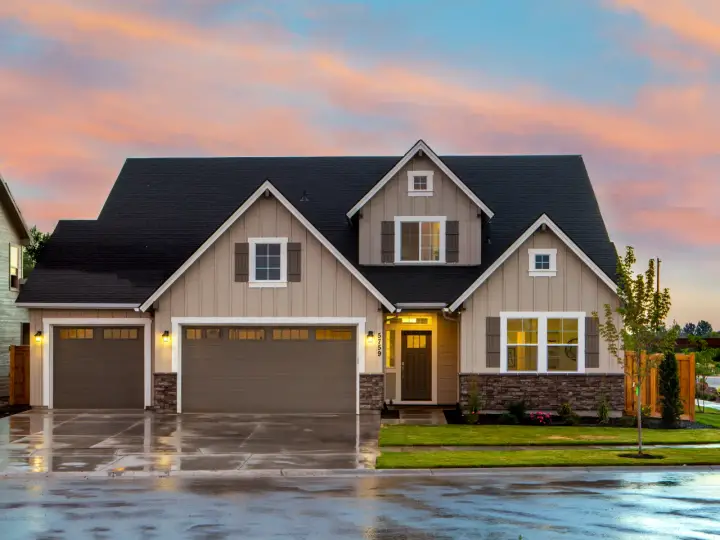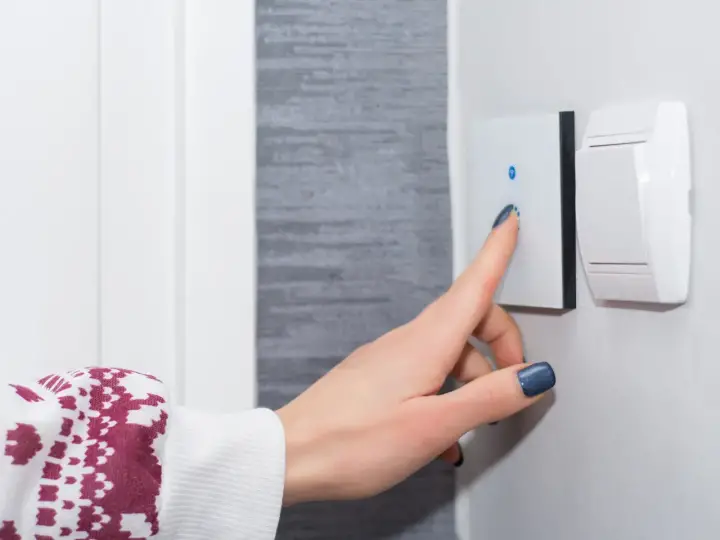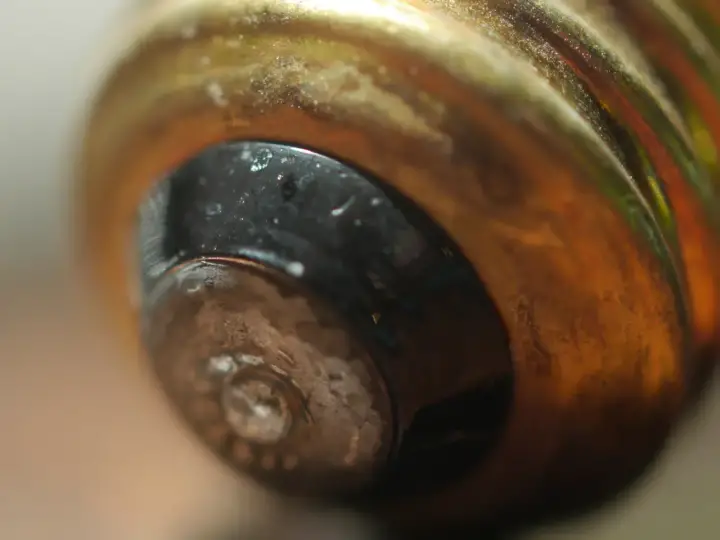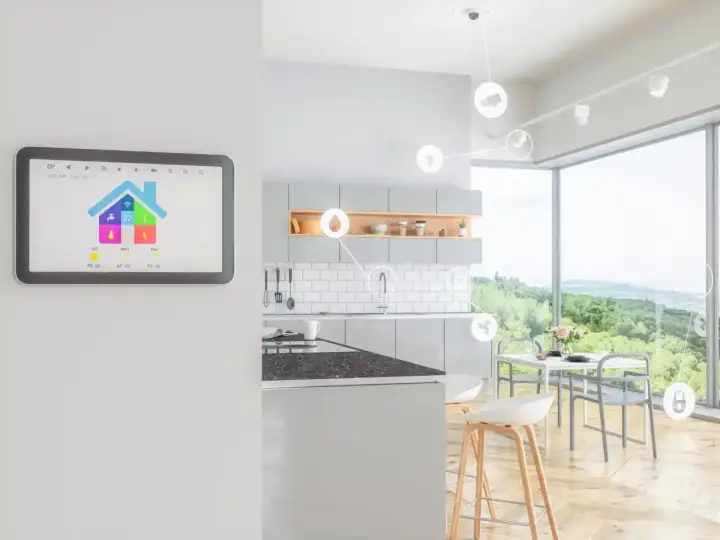How You Can Actually Use Smart Bulbs For Your Entire House
Updated on 28th Nov 2021 00:57 in General, Smart
So you want to use smart bulbs all over your house to make it a smart house. This is a relatively normal progression when exploring what the smart home ecosystem has to offer, but the question must be asked: should you really change every bulb in the house for a smart version? The answer will depend significantly on what system you are using, your budget, the type of lighting you currently have, and many other factors. In most cases, the determining factor is cost. In this post, we will explore the feasibility of putting smart bulbs all over your house and talk about some other methods of achieving the same thing.

Disclaimer: This post contains affiliate links. As an Amazon Associate, I earn from qualifying purchases.
Table of Contents
The cost
The cost can either make or break your plan, which perhaps makes it the most significant factor in your decision to make your home smart. Let's face it; smart home technology can be expensive. In fact, sometimes it can be really expensive. While everyone can agree that fancy equipment has better support and compatibility, the reality is that not everyone needs these extra features. Limitless resources would be nice, but most people need to be reasonable with their spending. As such, we can quickly establish that some products will be impractical in this regard. For example, according to EnergyStar, the average American household has about 50 light sockets. Yours could have less, but you might need to add a few lamps depending on the brightness of your smart bulbs.
In any case, if we use the average number of lights and multiply by a very modest cost of 15$/bulb, we get a whopping 750$. That's just to buy enough bulbs! This is obviously not going to be a cheap project, and that's assuming you use the most basic smart bulbs available. Some of the fancier bulbs that have features like color change will cost double or more! It's also important to note that you will want to keep replacement bulbs on hand in case any of them stop working, but more on that later. Below is a table that contains a rough average price range for a single, smart bulb. The table is broken down by technology to show that not all ecosystems are created equal and that you will be paying much more when using some brands.
| Protocol | Average White Unit Price | Average RGB Unit Price | White Example | RGB Example |
|---|---|---|---|---|
| Zigbee | 10-20$ | 20-30$ | Philips Hue | Sengled Zigbee RGB |
| Z-Wave | ? | 20-30$ | N/A | Inovelli RGB |
| WiFi | 8-15$ | 10-20$ | Sengled WiFi White | Sengled WiFi RGB |
| Philips Hue | 10-15$ | 30-60$ | Philips Hue White | Philips Hue |
| HomeKit | 10-15$ | 10-17$ | Meross White WiFi | Refoss Smart RGB |
At this point, you might be thinking that having a house full of smart bulbs is just not possible due to an exorbitant upfront cost. It's true that simply changing every bulb in the house for a smart version is bound to cost a fortune, but there are ways we can get around this problem.
Strategies for smart lighting without breaking the bank
As you can see, making an entire house smart comes with a few potential issues. For most, the biggest problem is that the cost of replacing every bulb in the house is simply too much. There are a few ways we can reduce the cost of making your entire home smart, though none of these may work for you. Unfortunately, if they don't work in your situation, there isn't much else that we can do.

Do you really need a smart bulb there?
Everyone wants the latest and greatest; who wouldn't? Despite this, the reality for most is that smart bulbs probably aren't even required for a fair number of places in your house. For example, consider a kitchen or a bathroom. Do you need to be able to pick a specific color for these areas? At the very minimum, I would always recommend using white smart bulbs for such areas as the RGB feature does not contribute to the desired effect.
Just switching a few areas for white instead of RGB could save you a ton of money, as the difference in price can often be upwards of 15$ per bulb! Additionally, you might not really need a smart bulb at all! Some areas feel more natural in the way they are traditionally done: with regular old light bulbs.
Using smart switches
Smart switches look and feel just like regular light switches, with the added benefit of remote control capabilities. However, there are a few key design differences, such as the fact that a smart switch is usually a toggle button rather than a switch with two distinct states. They will also allow you to continue using whatever bulbs you used before making anything intelligent, as they work by simulating a regular switch. The biggest downside with smart switches is that most of them require a neutral wire, which many lighting installations do not have. You can find out more about this rather annoying problem with my article dedicated to the subject here.
The short of it is, to save on cost, many (especially older) homes only run 1 or 2 wires, one for power and ground. That's a problem because smart devices need power to perform their smart functionality. The switch can't draw power without turning on the light unless there is a neutral wire. In any case, you can always proceed with this option by following the steps in the previously linked article.

Using smart plugs
The smart plug is very similar to the smart switch, with the most significant difference being that it's made to go between an electrical outlet and any device. So, as an example, you could connect a lamp to a smart plug so that you can turn it on and off using your smart home. Then, all you need to do is make sure the lamp is turned on such that it illuminates when you plug it in and that the lamp is plugged into the smart plug (and not directly into the wall). That's it! It's a straightforward way of making an existing light smarter.
The biggest drawback to this approach is that the smart plug works by connecting and disconnecting power to the entire unit, which works really well for super-simple devices, but runs into trouble when they have more functionality. For example, if the light has its own controls, the chances are that using a smart plug will not work very well. Luckily, it's pretty simple to see if a given device will work with the smart plug. All you need to do is make sure it's on and then plug it in. Of course, if it starts working as soon as power is applied, you are good to go, but you can forget smart plugs if it requires some additional input.
Alternate light source
Although the previously mentioned options are more popular, there are some alternative ways to use smart lighting. One such method is via RGB LED strips, which are individual LEDs on a long adhesive string that can be shaped into whatever arrangement you please. LED strips are seriously unique with their high light output, relatively low price, and flexibility (both literally and because LEDs can be used in many different ways). They aren't perfect, though. The following section details some problems with them and other similar multi-color lights.
The problem with RGB smart lights
The biggest problem is that they do not emit a natural color, resulting in very strange looking rooms. Consider the man below. Everything looks a bit off because you can't see color anymore due to how our vision works. The entire reason this happens is quite complicated, but the short of it is that your light needs to contain more than one color to see all the other ones. Most RGB strips can only produce red, green, and blue, which is important because you need white light for human vision to work properly.

While many of these strips will claim to support white, many of them can only approximate white by turning on all three colors at full brightness. Some strips support white, but they will be sold as RGBW (Red, Green, Blue, White) as a dedicated LED will produce the white light. As such, you probably don't want to use RGB light sources for your entire home. In many cases, even RGBW lights run into problems as the color temperature of the white light might end up being different to what you are used to. The most important part of whole house smart lighting is that you are comfortable with the result at the end of it all. These subtle color differences can make a big difference.
How to avoid problems with RGB smart lighting
The easiest way is to avoid RGB altogether for places that don't need it. There are many ways to solve this problem, and most of them are cheaper than RGB lighting anyways.
- White smart bulb
- Smart switch with a regular light bulb
- Smart plug with a regular light bulb
These options avoid the issue entirely and can even reduce cost as replacement bulbs will cost far less. Unfortunately, sometimes you just need RGB, and for those situations, the best you can do is find a bulb with dedicated white LEDs. These are some such products. All of these will have decent white light - much better than simply combining red, green, and blue light anyways!
| Name | Protocol | Link |
|---|---|---|
| Hue | Zigbee & Bluetooth | Philips Hue Bulb |
| LIFX | WiFi | LIFX WiFi Bulb |
| Sengled | Zigbee | Sengled Zigbee Bulb |
| SYLVANIA | Bluetooth | SYLVANIA Bluetooth Bulb |
Smart bulb socket and size
Another consideration is the actual size of your light sockets, along with what kind of light fits in them. There are two critical specifications for the majority of bulbs: the shape and the socket thread size. The thread size is perhaps the most important, as there will simply be no way to connect the light without using an adapter if they don't share the same size. Luckily, there are only a few commonly used thread sizes in North America and Europe.
| Type | North American Size | European Size | North American Example | European Example |
|---|---|---|---|---|
| Candelabra (Chandeliers) | E12 | E14 | Smart WiFi Candelabra Bulb | E14 Smart WiFi Candelabra Bulb |
| Standard | E26 | E27 | Meross WiFi Smart Bulb | HaoDeng WiFi Smart Bulb |
You can often get away with interchanging E26 and E27, as they are so similar in size, but you should not attempt to plug an E12 in an E14 socket as it can be dangerous. It's important to note that these are just the two most common sockets, and many more are on the market. There is a chance that one of the sockets you plan to make smart uses a different thread size. In this situation, you can either attempt to find a smart bulb built for that size or use an adapter. Anything that falls outside those two sizes will be significantly more challenging to find, but adapters are a way to get around this problem.
You can always use an adapter that converts your size into the more common E26 or E12 size. That way, you can effectively use any smart bulb you like so long as it uses the same voltage and power. For example, this is an adapter that converts an E39 Mogul to an E26 standard size. If you need to use an adapter, make sure you are careful not to exceed the voltage and power limits of the bulb and adapter or risk damage and possibly even fire.

The size and shape of the bulb
The socket size is important, but it is just one part of the story as the size and shape of the bulb is specified via a different system. To keep things simple, we are only going to talk about the most common indoor bulb types, but you should keep in mind that there are plenty of other less common types as well. The overwhelming majority of indoor lights are either A19 (Standard) or B10 (Candelabra), but other kinds exist, such as the G30, which is often used at the top of mirrors.
You can often get away with using a slightly or even completely different size and shape because many light fixtures have extra room around the bulb. As such, the smaller A15 would likely fit in a spot designed for an A19, and an A21 will probably fit in most A19 places. That said, we can make no guarantee that it will work, though you can always measure your existing fixture to determine which other sizes can also fit. Keep in mind that the size and shape code has no relation to the socket thread size! Do not get them confused.
| Type | Thread Size | Bulb Size | Example Smart Bulb |
|---|---|---|---|
| Candelabra (Chandeliers) | E12 | B10 | Dogain Smart Light Bulb |
| Standard | E26 | A19 | Meross Smart LED Bulb |
| Globe | E26 | G30 | Feit Electric G3060 |
Effect on energy consumption
The final significant consideration for using smart lighting in your entire home is its impact on your energy bill. As practically every smart bulb uses LEDs, we will be focusing on comparing the power consumption of a regular LED bulb with that of a smart LED bulb. The vital thing to keep in mind with smart bulbs is that they will all use some "vampiric" power, which means that they use electricity while doing nothing.
You might also see this called standby power. It's all the same and is especially important for smart devices as they must always be ready to receive a command. The standby power will differ for various technologies, but we will base our numbers on the power used during the transmission for each standard. This will give us a worst-case analysis, where we assume that each bulb is constantly transmitting and using the most power it possibly can. For example, a typical Zigbee radio will use roughly 26mA (milli-amps) while connected to the network.
We will assume that this is a constant draw in addition to the power consumed by the LEDs. We will also take that the other electrical components (processor, memory, etc.) use negligible power compared to the wireless radio (which is why we ignore the rest). As such, if both a regular bulb and a Zigbee smart bulb have an 8W (Watt) LED, the Zigbee bulb will use roughly 0.09W more. Using the average electricity cost in the US of 0.1331$ per kWh (kilo-Watt-hour), you will find that it costs 9.33$ per year to run the regular light and 9.44$ per year for the Zigbee bulb.
That's not to mention that those numbers assume the light is on every hour of the day for an entire year! In reality, the Zigbee radio is not constantly transmitting, and the bulb has been optimized to use the least amount of power possible. All of that results in a real-world cost that is much smaller than the one shown here.

What protocol uses the least power?
While the difference between a smart bulb and a regular bulb may not be anything significant, the difference between protocols is much more pronounced. We will compare the transmit power of each protocol to show that some are more power-efficient than others. It's worth noting that this is not a comprehensive analysis, just an estimation, as it doesn't consider how often each one connects to the network, the optimizations in power usage, and so on.
| Protocol | Typical Current | Power Used | Yearly cost With 8W LED | Difference From Regular 8W Bulb |
|---|---|---|---|---|
| WiFi | 150mA | 0.5W | $ 9.92 | $ 0.59 |
| Zigbee | 26mA | 0.009W | $ 9.44 | $ 0.11 |
| Z-Wave | 23mA | 0.07W | $ 9.42 | $ 0.09 |
| Bluetooth | 30mA | 0.1W | $ 9.45 | $ 0.12 |
You might have noticed that while there are some variations, they are still very close. If there is one thing to learn from this, it's that WiFi is by far the least energy-efficient option. As such, to take advantage of the lowest cost possible, you should choose a less power-hungry protocol such as Zigbee.
The verdict on smart bulb energy consumption
The reality is that you are probably not going to notice whatever minute difference there is between a regular LED bulb and a smart LED bulb. If anything, you might want to avoid WiFi bulbs, but even then, the difference is not that big unless you have a considerable amount of them. Where there will be a big difference, however, is if you are not currently using LED bulbs. The combination of LED's outstanding efficiency and the ability to use your smart home to turn off the lights at night or when no one is using them will result in excellent savings on your energy bill.



